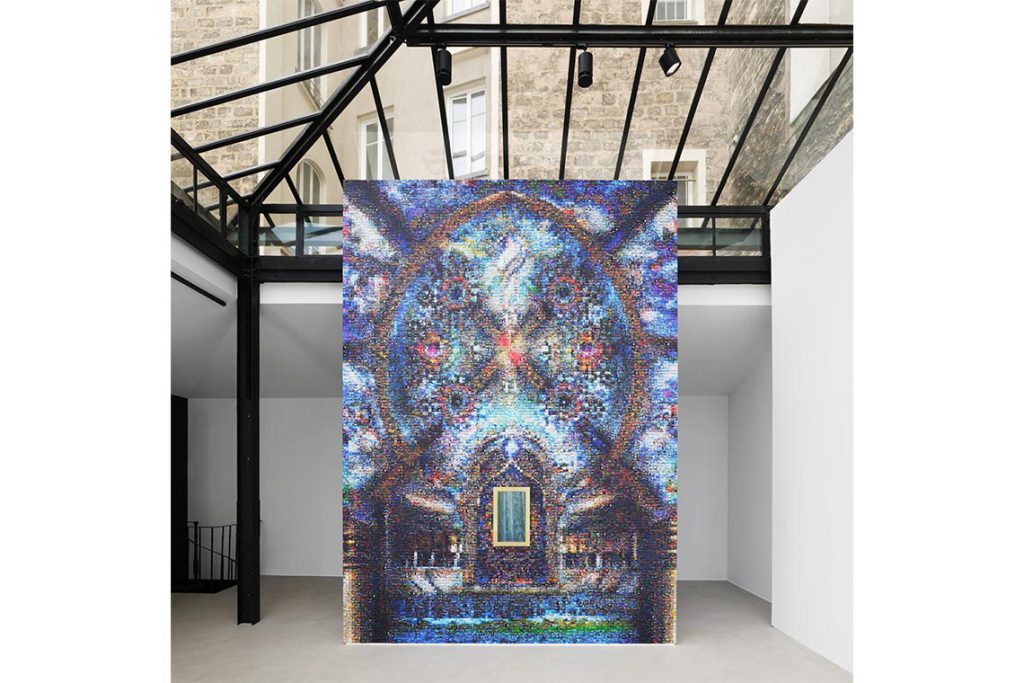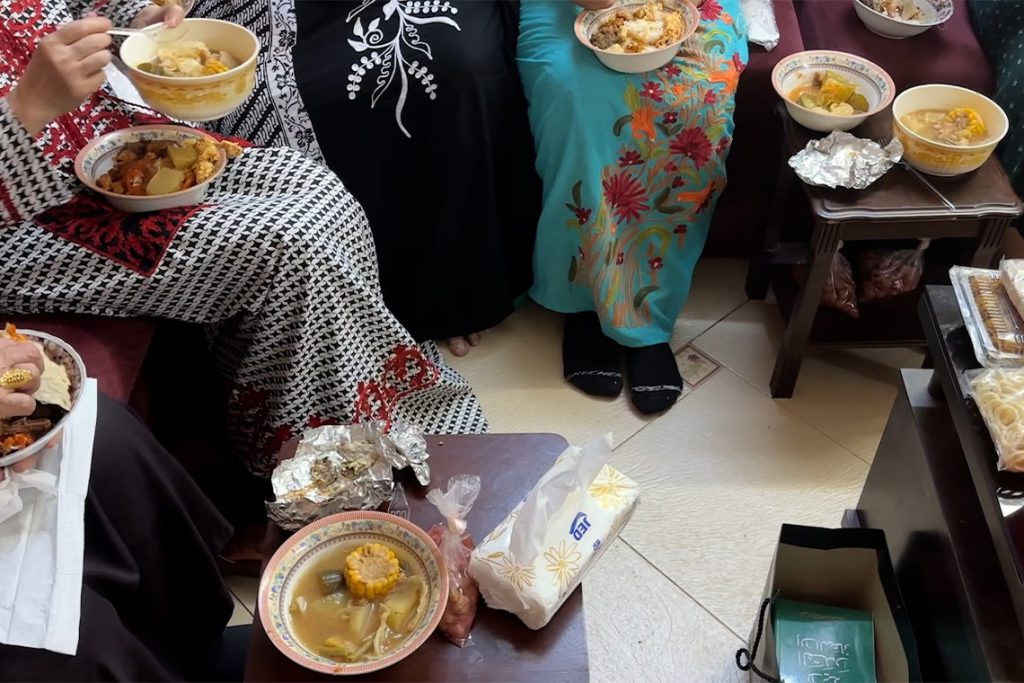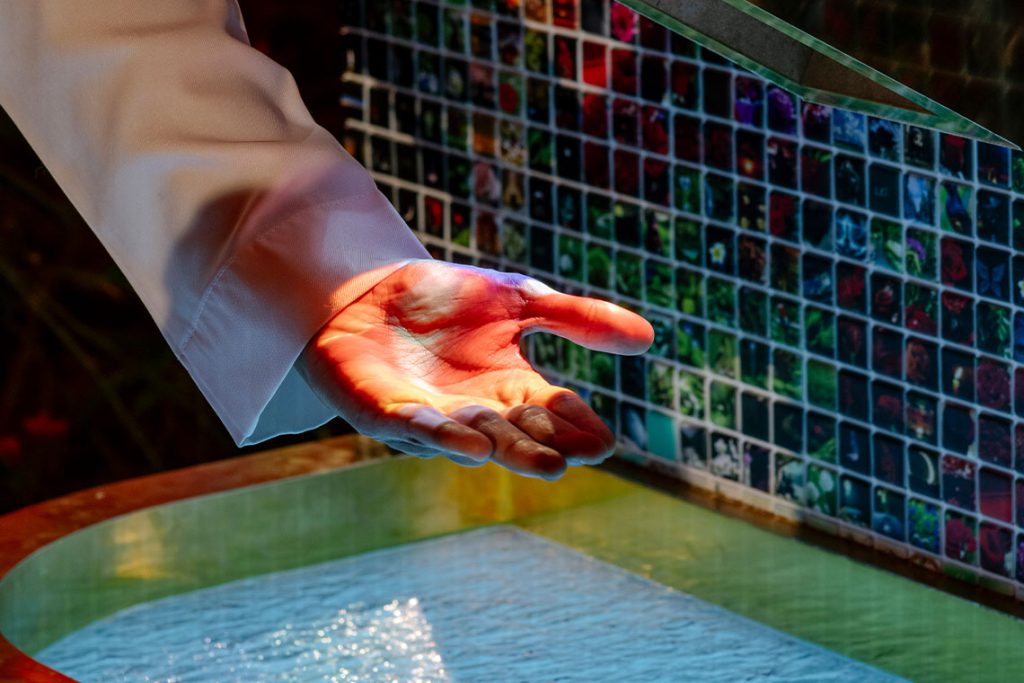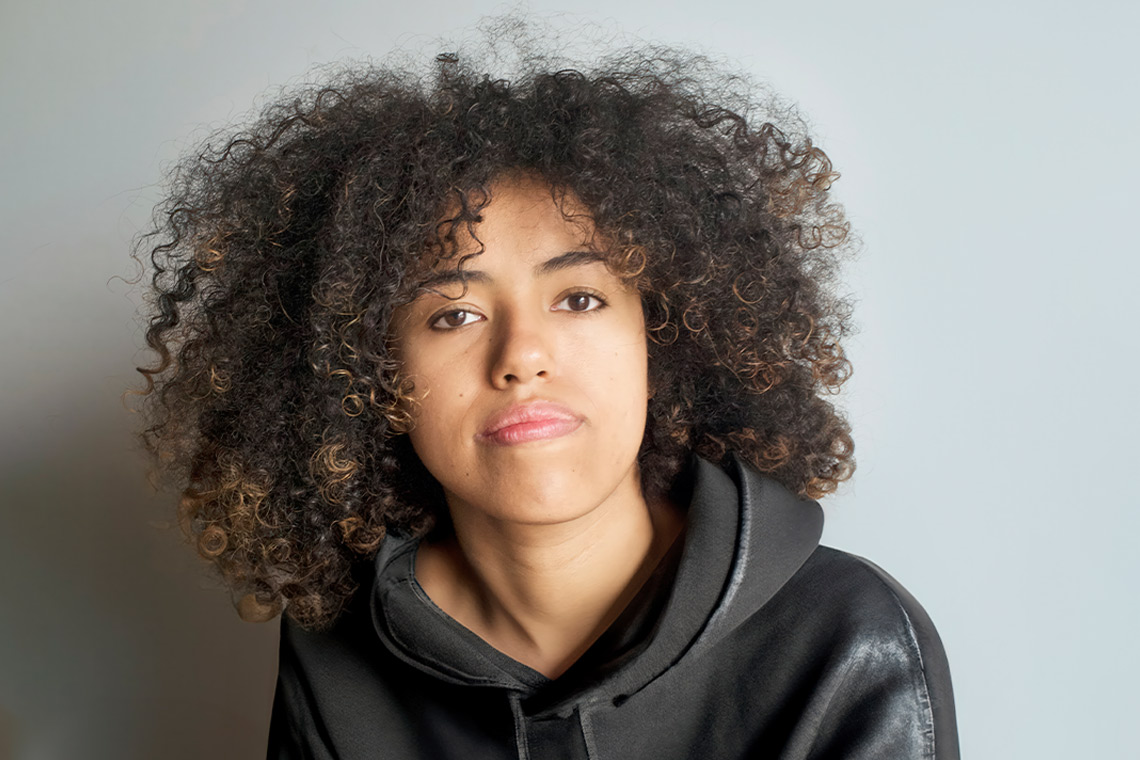Through video works and installations, the artist merges religious and political narratives, exploring how digital and physical realities intersect to shape contemporary culture.
Canvas: You first studied information technology. How has your understanding of systems and data influenced how you view the body, in particular bodies under surveillance or control?
Anhar Salem: I was drawn to this field because I was fascinated by communication, what it means to connect, to be accessible and how we interact with systems and each other in digital spaces. Even though the programme was quite abstract and technical, focusing on how networks function between machines, it also mirrored what I was experiencing personally, especially growing up in Saudi Arabia. I was raised in a context where everything felt private and restricted, with gender-segregated spaces, immigrant vs citizen dynamics, and general hesitancy to speak openly about our roots and identities, even in a cosmopolitan city like Jeddah.
I remember crying and thanking God for the internet. Suddenly I had access to things I never imagined: ideas, images, people. Later, as social media exploded, I began to feel trapped, I started imagining new platforms and alternative ways to navigate online spaces. That led me to graphic design and IT. I believe in user experience, how we scroll, type and connect, it is deeply tied to the state of media today, which I try to reflect in my recent explorations in art and filmmaking.

Your work moves fluidly between online and offline worlds. How do you think our bodies are shaped by the digital platforms we inhabit daily and how is this reflected in your approach to your work?
When I say ‘body’, I imagine not only the human body but also anything that takes physical shape, and how we can construct different social, economic and political systems around the physical. Even in the digital world, we are dealing with physical entities, even if they appear in two dimensions. Just like in the physical world, we engage in forms of social engineering: how we organise ourselves, how we function, how we survive together and how we navigate power dynamics. All these structures apply in digital spaces too.
When I began working with raw images, I was reflecting on how certain bodies are marginalised, especially in public representations. Why do some bodies remain unseen in the media? Because we exist within systems where media functions as a tool of power. This didn’t begin with the internet, it existed in television, music and radio, in all forms of institutional media that have historically represented certain bodies while erasing others.

Mashallah. Why Did You Cross The Indian Ocean? (2023) delves into Hadhrami-Indonesian matrilineal culture, especially among mothers and daughters. How did the idea of migration shape your approach to the body?
In this film I extended my ideas about what is considered private and what is public, and how, within the experience of immigration, people often struggle to create spaces that are both. These are the spaces that feel private, but at the same time are public; they are not just for passing time, but for survival and solidarity. In my case, this concerns the Indonesian and Yemeni communities in Jeddah. When my family moved to Saudi Arabia, they opened our home to the Indonesian community, not only as a place to gather but also as a source of income. This is how my parents survived. They turned our house into an Indonesian grocery and clothing shop, a space for the community to feel at home and to share resources. We kept this tradition going, and a part of it included monthly gatherings known as arisan, a type of social event involving food and religious talks, which is common back in Indonesia. During these gatherings, people exchange news and support one another. For example, we helped through a monthly rotating savings system, where each month one person received the pooled money if they needed to pay for their residency permits or for medical operations etc.
More widely, the way we present and organise ourselves has changed. When I asked my mother how she built her community, she said, “Just like that. Alhamdulillah. It was by God.” But for the younger generation today, it’s thanks to algorithms, to how digital geography shapes visibility. My business is directed towards people in my neighborhood in Jeddah through the map of Snapchat”, as one character says in the film.
In …and the skies are a conquered paradise (2025), you merge religious, corporate and political voices using mythic language. How do you see such narratives overlapping in today’s media landscape?
In this work, my focus was on weaving together spiritual, military and corporative narratives. I wanted to explore how these institutions interact, overlap and use each other’s language in contemporary discourse. I created a relatively simple found footage film where voices from different spheres – religious leaders, tech monopolies and military representatives – speak about and to one another. I also reflected on monotheism, especially the ideas shared by Christianity, Judaism and Islam that there is one ultimate truth, often expressed as exclusivity. This dynamic plays out on the internet today, where a handful of massive corporations control vast amounts of media and wield significant power. These companies often align with governments and militaries, who in turn need narratives to justify their alliances and users of technology. It is not just about selling services, it’s about shaping the story around them.

Could you elaborate on how the notion of naivety is explored in your work Media Fountain (2025), commissioned for the 2025 Islamic Arts Biennale?
I collected Muslim avatars and profile pictures online, archiving how people digitally express their identities. Encouraged by Muhannad Shono, the biennale’s curator of contemporary art, and associate curator Joanna Chevalier, I developed an installation that transforms these avatars into a physical mosaic. The grid layout references social media platforms, symbolising both individual and collective representation online.
Building on my background in video art, I added found footage to the installation, exploring the concept of “internet filter bubbles”, segmented online communities each with distinct aesthetics and cultural codes. I noticed a specific Muslim digital bubble where videos serve not just as entertainment but as spiritual reminders, much like mosque gatherings in real life. We created an interactive piece where a vertical stream of videos projected onto participants; hands, accompanied by Aram Abbas’s sound composition that mimics the phone experience. Displayed on a phone-shaped screen, the work blurs the line between physical and digital, highlighting how our bodies and devices intertwine.
Having recently participated in the inaugural Bukhara Biennial, what stands out to you about working within such a rich cultural and historical context?
I participated as a performer in the Bukhara Biennial. Artist and filmmaker Majid Al-Remaihi invited me to play the role of the main character in his piece, Nasreddin Hodja, a well-known folklore figure across Central Asia, the Middle East and beyond, who is also known as Juha in the Arab world. Performing as Juha was very meaningful because this character somehow represents my personal feelings toward the world, his wisdom mixed with humour and his relationship to language, power and everyday life. This character travelled along the Silk Road, moving from Central Asia through East Asia, India and the Middle East, adapting to every place he went. This syncretism fascinated me because we don’t really know if Nasreddin Hodja was a real person, but he exists in many cultures.
In Bukhara, Majid and I collaborated with Hamza Kashgari, a Saudi-Uyghur poet whose work I previously referenced in my piece titled …and the skies are conquered paradise, والسماوات جنة محتلة …, which takes its name from his poem تستفزيه . For Majid’s new video installation, Hamza was commissioned to write a poem that centres on Juha, reflecting on his state after losing his donkey and the search for the donkey becomes a metaphor for searching for his own place in history. We brought Nasreddin Hodja to life again, using the Arabic language, Afro hair (my own) and a blend of cultural elements including oral tradition, live performance and visual identity. For me, this collaboration is very interesting. But at the same time, being part of a new art initiative can be awkward. For example, performing as a national Uzbek figure in Uzbekistan, speaking and engaging with both local and international audiences.



